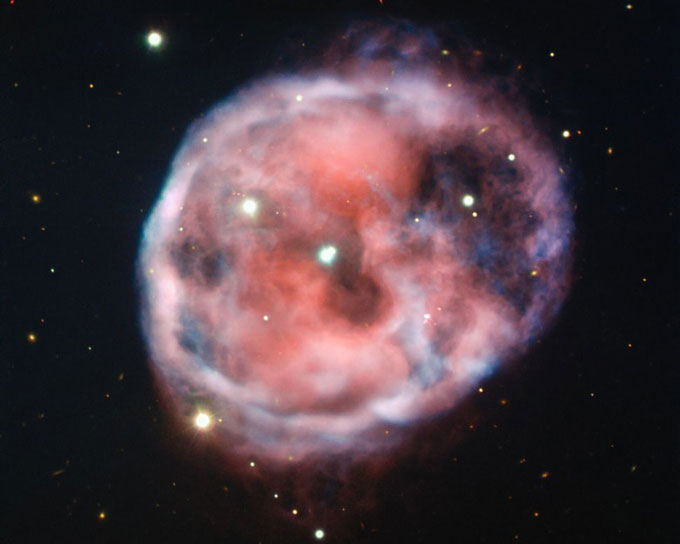The NGC 246 nebula contains an orbiting three-star star system that looks like a glowing skull in the dark.

Scientists used the Very Large Telescope (VLT) in Chile to photograph the NGC 246 nebula, also known as the Skull Nebula, Space reported on October 31. This nebula is approximately 2.5 light years in diameter and is located 1,600 light years from Earth, in the constellation Cetus.
NGC 246 is a dust-filled cosmic remnant of a stellar explosion, in which a sun-like star explodes and exposes the outer layers, becoming a bright white dwarf star. This white dwarf is located in the center of NGC 246. Its companion is a red dwarf which cannot be seen in the new snapshot of the Very Large Telescope. They revolve in orbit to form a binary star system.
A third star revolves around the star at a distance of 1900 times the distance between the Earth and the Sun. This trio makes NGC 246 the first planetary nebula discovered to have a central triadic star system, according to experts at the European Southern Observatory (ESO).
The new photo clearly shows clouds of gas and dust from an ancient explosion of stars. The nebula’s hydrogen gas (red) and oxygen (light blue) appear to glow, bringing out the skull nebula in the middle of dark interstellar space.


